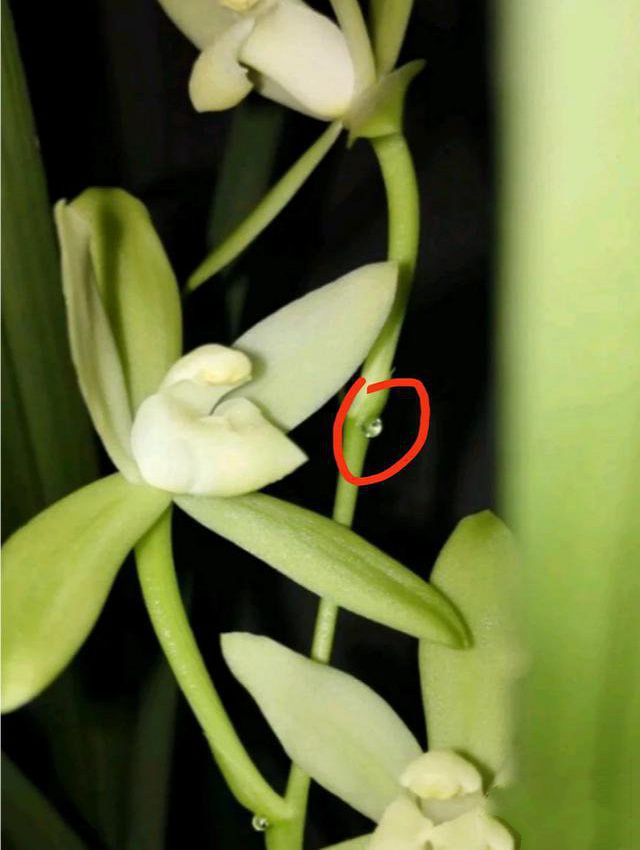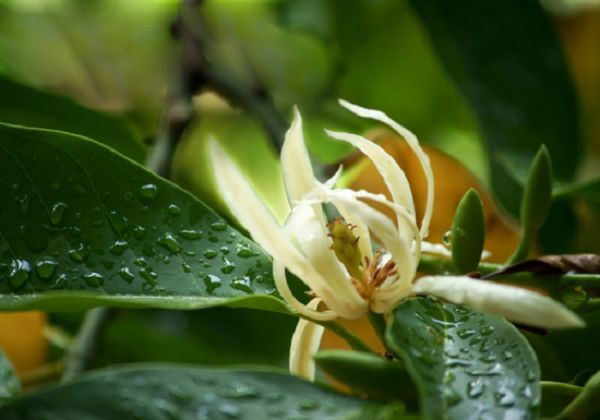What is the manifestation of lack of fertilizer in orchids?
Flower encyclopedia as the saying goes "clear orchid, turbid jasmine", meaning that orchid fertilization should be thin fertilizer frequently, avoid thick fertilizer. If the nutrients in fertilizer can not meet the growth needs of orchids, there will be a variety of poor nutrition, do you know what kind of fertilizer your orchids lack?
When it comes to fertilization, the word that people often mention is nitrogen, phosphorus and potassium, but fertilizers are far from the only ones, including magnesium, copper, manganese, calcium, iron, zinc, copper, boron and so on. Each element is deficient, and orchids show different symptoms. Let's take a look.
Expression of nitrogen deficiency in orchids
Nitrogen element mainly promotes the growth of leaves. When nitrogen is deficient, the new leaves grow poorly, shorter and thinner than the old ones, with yellowish color and lack of luster.
Solution: irrigate the roots with potassium sulfate compound fertilizer solution, or spray the leaves with urea solution in the evening, once every 3-5 days, three times in a row, the new leaves will gradually return to normal.
Performance of phosphorus deficiency in Orchid
Phosphate fertilizer promotes the growth of leaf buds. When the orchid plant is lack of phosphate fertilizer, the leaf bud grows slowly, does not grow root for a long time, and the leaf edge will be curled.
Solution: choose potassium superphosphate leaching solution to irrigate the root and irrigate the root twice every 10 days. Or spray foliar phosphate fertilizer, once every 3-5 days, three times in a row.
Performance of magnesium deficiency in orchids
The orchid plant is lack of magnesium, and the leaves will turn yellow. Especially the old leaves, the tip and edge of the leaves will appear yellow, and the leaf surface will be curled.
Solution: 0.5% magnesium sulfate solution can be used to spray leaves in the evening, once every three or five days, three or five times in a row, it can be corrected.
Performance of potassium deficiency in orchids
The potassium deficiency of orchid showed that the leaf margin and leaf tip were yellow. at first, the old leaves turned yellow, slowly spread to the new leaves, and gradually changed from yellow to brown. And the leaves of the plant are soft and easy to bend. If you encounter strong light or low temperature, the leaves will be dehydrated.
Solution: 0.5% potassium sulfate solution can be used to irrigate roots and spray leaves, or plant ash can be removed.
Performance of manganese deficiency in orchids
If the orchid lacks manganese, it is easy to get sunburned. Although there is shade, sunburn-like markings still appear on the leaves, there are spots in the spots, and the buds are not developed. Neutral, calcareous and sandy soil are prone to manganese deficiency.
Solution: 0.3% manganese sulfate solution is sprayed on the leaves for 3 times, which can be corrected.
Expression of calcium deficiency in orchids
The calcium deficiency of orchids showed that the leaf tip was hooked, which seriously affected the plant shape.
Solution: the root can be irrigated once with 1.0% lime solution, or 3% solution of livestock calcium powder can be used once, which can be corrected.
Performance of iron deficiency in orchids
Iron deficiency in orchids is mainly characterized by yellowish-white leaves of young leaves and scorched brown spots on the veins and tips of leaves in the middle.
Solution: 0.5% ferrous sulfate solution can be sprayed on the leaves, once every 3 days, two or three times in a row, it can be corrected.
Performance of zinc deficiency in orchids
Zinc deficiency in orchids is mainly characterized by rust-like spots in the middle of the leaves at the bottom, and gradually extends to both ends, and the petiole of the new leaf is obviously different from that of the old leaf.
Solution: 0.1% zinc sulfate solution can be used to spray leaves, once every three to five days, three times in a row, it can be corrected.
Performance of copper deficiency in orchids
The lack of copper in orchid mainly shows that the leaf tip will turn green, turn gray-white, and gradually expand to the whole leaf, and its growth gradually stagnates.
Solution: 0.2% copper sulfate solution can be sprayed, once every 7 days, twice in a row, it can be corrected.
Expression of boron deficiency in orchids
Boron deficiency in orchids showed that the base of young leaves was injured and the petiole ring was brittle and easy to break. The bud blooming slows down, the number of flowering decreases obviously, and the plant growth weakens obviously after flowering.
Solution: 0.3% borax or boric acid solution can be sprayed once a week, three times in a row, then it can be corrected.
Expression of Molybdenum deficiency in Orchid
The molybdenum deficiency of orchids showed that the new plants were obviously dwarfed and did not grow tall, and the old leaves lost chlorosis, resulting in withered yellow, wilting to necrosis.
Solution: 0.1% ammonium molybdate solution can be sprayed once every 3 days, then it can be corrected.
- Prev

There are many crystal beads on the orchid flowers and leaves. What is it?
There are many crystal beads on the orchid flowers and leaves. What is it?
- Next

What if the white orchid spends the winter inside with a large number of fallen leaves?
What if the white orchid spends the winter inside with a large number of fallen leaves?
Related
- Is the orchid suitable for indoor use? Is it good for the body?
- How to prevent the empty root of orchids?
- What to do after the crab claw orchid is withered?
- Why are the leaves of orchids always yellow? Fertilizing and watering.
- Can the root of the gentleman orchid be saved if it is rotten?
- Diagnosis and treatment of cotton-blowing beetle insects in Cymbidium
- There is a way for a gentleman's orchid to rot.
- What is the most suitable temperature and humidity for the orchid?
- How to raise a gentleman's orchid? Cultivation techniques of Cymbidium
- How to prepare the nutritive soil for the cultivation of Cymbidium

